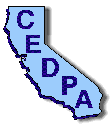
 |
California Educational Data Processing Association |
The DataBus - Vol. 37, No. 2
|
Many years ago when Aldus Corporation introduced PageMaker for the Macintosh, it forever changed the publishing industry. It brought the ability to produce professional-looking newsletters within the reach of anyone with a Macintosh and LaserWriter. The publishing paradigm of typing masters and running them off on ditto machines was shifted to utilizing the tools of technology--word processing and laser printing.
It also provided the ability for everyone to become "lousy" desktop publishers.
I remember one of the first newsletters I produced. Conventional publishing guidelines call for a limited number of different fonts on a printed page to make reading easier and more pleasing to the eye; that first newsletter contained about a dozen different fonts, all mixed and looking rather hideous by today's standards. However, at the time, I thought it looked pretty good.
That's the point...while I thought it looked good, in actuality it wasn't, and it probably didn't reach the target audience it was intended for (unless I was publishing for the wastebasket!). The problem was compounded several years later when Aldus released its counterpart application on the Windows platform. Now desktop publishing was within reach of anyone who had a computer and a laser printer! PTAs, high school journalism classes, clubs, charitable organizations, municipalities...all pushing out more drivel than anyone could possibly be interested in reading, and most without proper writing and publishing skills!
Here we are, a dozen years later. Now this publishing frenzy has been expanded to reach the entire world through this fabulous medium called the Internet. Products such as Adobe's PageMill, Claris' Home Page and Microsoft's Front Page now give the ability for everyone to publish terrible web pages, poorly laid out and full of graphics that take forever to load. Nowhere in the web publishing world is there any mention of required training in graphical design and layout. Everyone has a home page full of Java applets that drive you crazy, large self-serving photos of pet dogs and cats, and endless bits of information that the page creators believe are of interest to the entire world. Who visits these pages anyway? And, if I happened upon your home page, why would I wait the five minutes it takes your lengthy page, full of non-interlaced GIFs, Java applets, and horrendous colors to load?
Flanders is a webmaster for a Bakersfield Internet Service Provider, Lightspeed.net, and a professional HTML instructor. He has no background in design; Flanders came from the school of hard knocks, making every mistake that he talks about. His web site is always changing, memorializing those sites which he deems to serve as examples of what not to do. "It's tough to tell people how to do things right, but they can see what sucks when it's pointed out to them," Flanders said. Examples he links to come from actual pages on the Internet, from municipalities to commercial websites to personal pages. Some of the examples are suggested by the many who have visited his site. His site received almost 70,000 hits the first month it was online.
The opening page reflects the horror of gaudy, flashing colors and text but gives you an opportunity to link to his "real" home page. His "real" home page states, "The purpose of this web site is to help people design effective and aesthetically pleasing web pages. My methodology is somewhat different--I firmly believe that if a person is exposed to bad web page design they'll be less likely to use these techniques in the pages they create. Luckily, most people commit the same mistakes over and over and over and over--you get the point. By pointing out these mistakes, and being told that they are mistakes, you can avoid them when you design your web pages."
His tutorial covers major areas such as Design (frames, Java), Content (pages that don't say anything, stale content that hasn't been updated), Graphics (backgrounds, large images, animated images, colors), Text (tpyos [sic], bad text, too much text, fonts and drop shadows), and Miscellaneous topics (cookies, Meta tags, links, advertising).
You might disagree with some of Flanders' opinions, but sometimes the truth hurts. Take a look at this site. If you get an idea of what Flanders is trying to communicate, you'll definitely be in a position to design and produce more effective web pages. If you're sure that you know how to design good web pages, visit the site anyway--you might get a laugh or two by seeing the ridiculous and the obvious.
Did Vincent Flanders memorialize your web page?